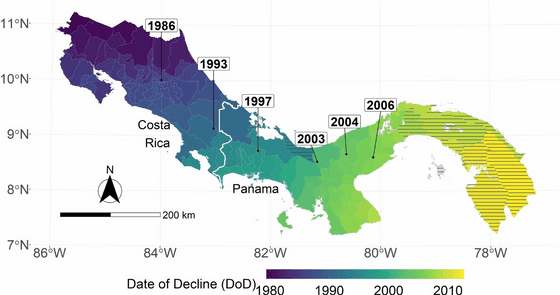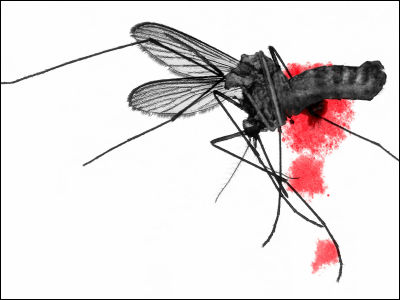When a frog disease is prevalent, humans also get sick, why on earth?

It
Amphibian collapses increased malaria incidence in Central America - IOPscience
https://doi.org/10.1088/1748-9326/AC8E1D
The Frogs Vanished, Then People Got Sick. This Was No Harmless Coincidence. : ScienceAlert
https://www.sciencealert.com/the-frogs-vanished-then-people-got-sick-this-was-no-harmless-coincidence
Malaria: Amphibian deaths in parts of Central America may have caused the infection to surge | New Scientist
https://www.newscientist.com/article/2338764-amphibian-deaths-in-central-america-led-to-malarial-mosquito-surge/
In the 1980s, ecologists in Costa Rica and Panama, located in Central America, noticed a steady decline in wild frog and salamander populations. This is mainly caused by chytridiomycosis, a fungal infection fatal to amphibians.

by Forrest Brem
The chytrid fungus has had a devastating impact on the world's amphibians, with 200 species of frogs believed to have become extinct in the 40 years since the 1980s due to fungal infections, and at least 501 species in Asia and South America alone. There is also a report that 90 species have become extinct. For this reason, some researchers position chytridiomycosis as ``the worst case of biodiversity loss due to disease''.
If a specific creature suddenly decreases or becomes extinct, the ecosystem will be disturbed and the environment will be greatly affected, but the drastic decrease of amphibians is no exception. In particular, tadpoles and salamander larvae consume a large amount of mosquito larvae, which are mosquito larvae, as food.
This time, a research team led by Michael Springborn, an environmental scientist at the University of California, Davis, found that the epidemic of chytrid fungus in South America coincided with the rapid increase in malaria in the region. I tracked it down.
Below is a map showing the spread of chytridiomycosis in Costa Rica and Panama. Significant declines in amphibian populations were recorded in Costa Rica during the 1980s and 1990s and in Panama during the 2000s.

Next, the following is a graph showing changes in the annual total number of malaria patients. Looking at the line graph of Costa Rica indicated by the blue line and the line graph of Panama indicated by the ocher dashed line, it can be seen that the number of malaria patients increased sharply several years after the number of amphibians greatly decreased. I understand.

The research team used a regression analysis model to analyze the causal relationship between the decrease in amphibians and the increase in infectious diseases, and found that one-half to two-thirds of the increased malaria cases in Costa Rica and Panama were due to the decrease in amphibians. The result that it is was obtained. Other factors that contributed to the epidemic of malaria include the impact of flooding.
The number of amphibians has not recovered much since the outbreak of chytridiomycosis, but the number of malaria cases in Costa Rica and Panama has calmed down considerably compared to the peak. The research team believes that this is the effect of malaria control such as spraying insecticides.
However, just because the malaria epidemic has subsided is not enough. ``Unless scientists and decision-makers consider the impact of these past events, the poorly regulated trade in living creatures could spread new amphibian infectious diseases around the world,'' the research team said in a paper. , there is a risk of further disasters, ”he warned of further risks.
Related Posts:







